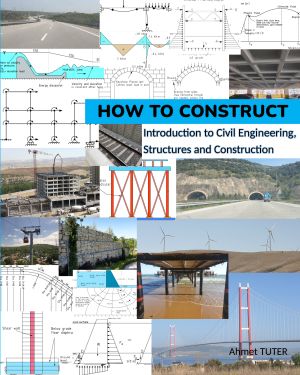Water Resources Engineering Failures
Water Resources Engineering is one of five main branches of civil engineering. Structures that handle water in some way, fall under this branch, as far as their selection, capacity, placement and other high level criteria and design – but the structural and geotechnical design are still performed by civil engineers specializing in structural and geotechnical branches. Therefore in this post we will talk about the failures that fall under these higher level criteria for water related structures.
Water Resources Engineering, is commonly classified further into its sub-branches as:
Hydrology
Hydromechanics
Coastal and Marine Engineering
Hydrology deals with the movement and distribution of water on earth. We need to perform a hydrological study before deciding on the overall characteristics of any water related structure. Determining storm water quantity, drainage patterns, infiltration and surface runoff are among the main objectives of a hydrological study. From this, we can make flood risk assessment, determine overall capacity of our infrastructure, perform environmental impact studies. By infrastructure we mean storm drain systems, flood preventing structures, dams and so on. As you can see this study is about high level criteria, even before the actual design starts. With this we can determine where and how the structure will be placed, its type and other properties, its capacity and purpose. Only after this, and after geotechnical investigations, the actual structural design may start. For example, assessment of environmental impact of a dam proceeds in close coordination with a hydrological study. These are macro level studies that only can be handled by government level offices and very large firms that are employed by governments. A hydrological study failure such as making wrong estimates about the amount of water that needs to be handled, may therefore mean very costly and sometimes even catastrophic consequences for the residents of an area.
Hydromechanics sub-branch deals with how the water will be handled once it meets the structure, and mainly what structural and geotechnical demands that amount of water will have from that structure. Hydromechanics is based on fluid mechanics principles, which are used to determine the forces from fluids on structures. A lot of failures could happen in the design process such as:
The constant dynamic water force can cause fatigue in the structure, any steel connection points such as bolts, welds can fail
Constant, long duration water flow could cause erosion and wear in certain parts
Corrosion must be accounted for, for exposed steel components
Leakage could happen in joints
During water flow, certain conditions create a phenomenon called cavitation, which are low pressure zones within the flowing medium, which can harm pipes.
Water leaks can occur
Inadequate pressure and or flow rate can cause clogging and underperformance of the system
Rapid opening and closing of valves create a phenomenon called water hammering, which harms the system with sudden forces
Water may get contaminated which also harms the components
System supply may become unstable and oscillations may occur
Thermal effects can cause system failures if unaccounted for, because they cause expansion and contraction in the structure and change in fluid viscosity
Bursts may occur in pressurized components
Coastal and Marine Engineering, is another sub-branch of water resources engineering. It deals with coastal improvement structures such as sea walls, piers, marines, harbors, revetments, quays … In addition to hydromechanics, wave dynamics principles also enter into equation for these structures. Combined with the challenges in building in or right near water, design and construction of coastal structures is indeed challenging and require highly specialized expertise, both during design and construction phases. Some common types of failures include:
Being often on saturated sand, foundations of these structures are highly susceptible to liquefaction, if located in seismic zones
Corrosion risk of any structural steel and concrete reinforcement is much higher, as the system is located in salty sea water
Major and even total failures can happen due to underestimation of wave forces, and hydrological characteristics of the area, tides, ice action
Reflecting waves from the structure will tend to cause scour and erosion. Therefore the front side must be protected
For marines, harbors and ports, the layout must be carefully designed to accommodate all possible sizes of vessels without causing congestion
Unaccounted berthing loads, impacts can cause structural damage
Reference:“How to Construct: Introduction to Civil Engineering, Structures and Construction” – A. Tuter, August 2024
Post By: Ahmet Tuter
——————————————————
Terms of use:
Copying or republishing of our content is not allowed without written permission from us. We make dated records and keep originals of our posts and images. The content in this website may be incorrect or incomplete. User assumes all liability and risk as a result of using this website. Also see our Terms page.

